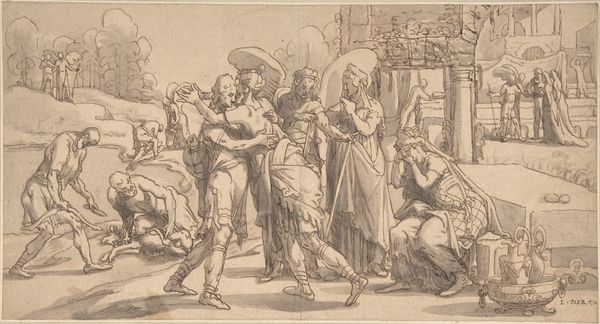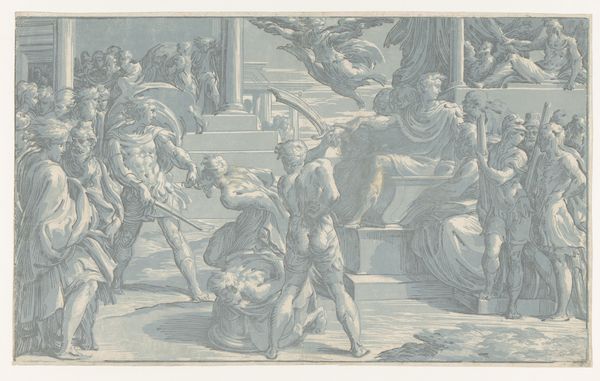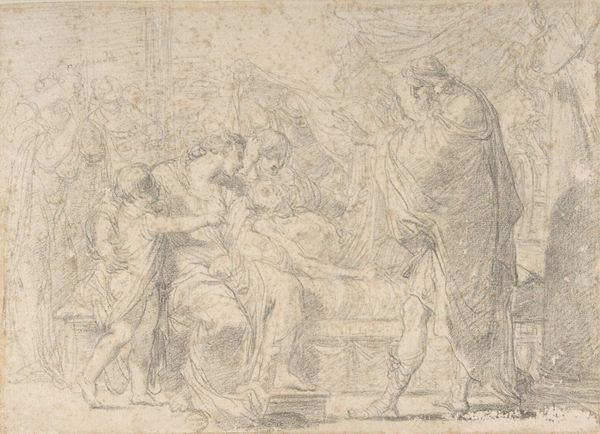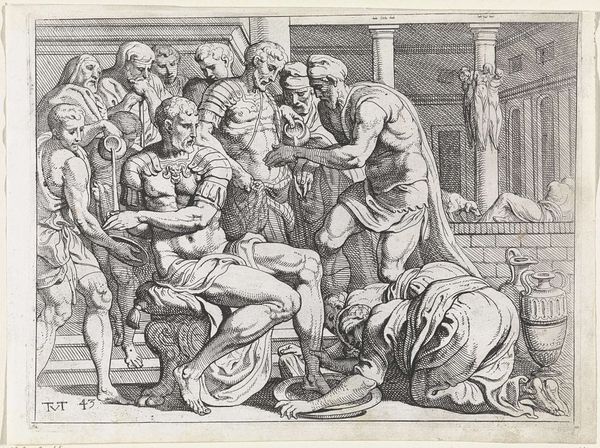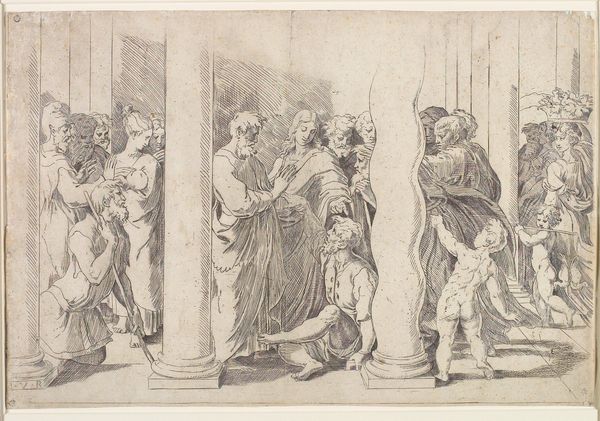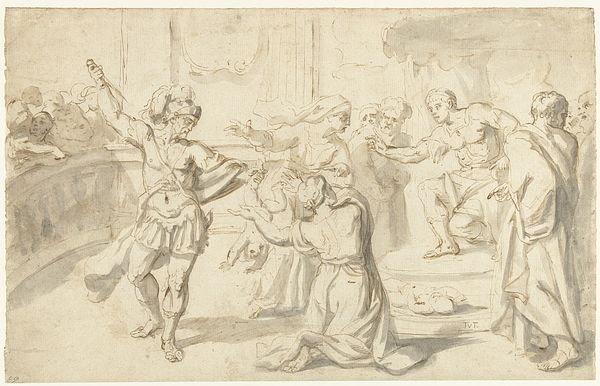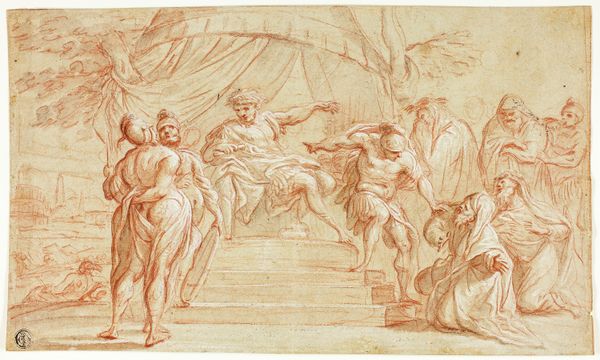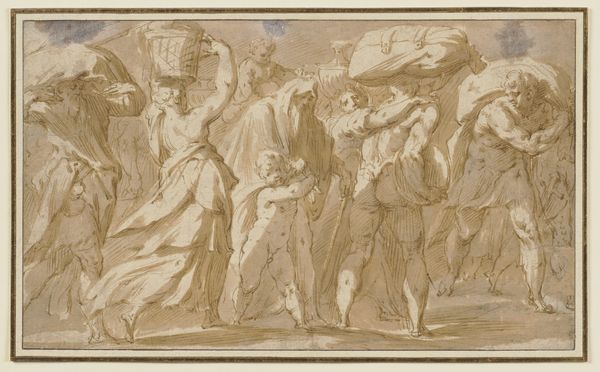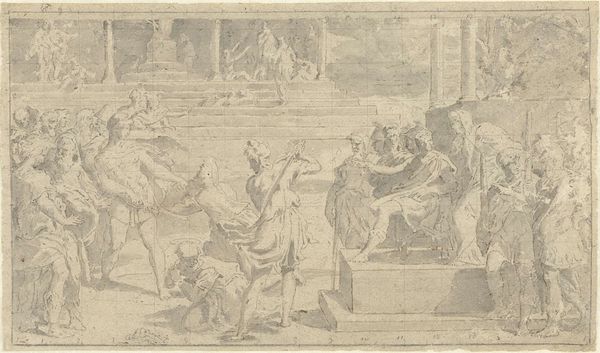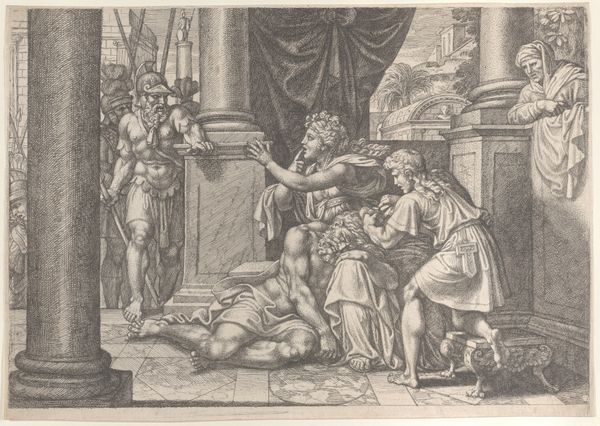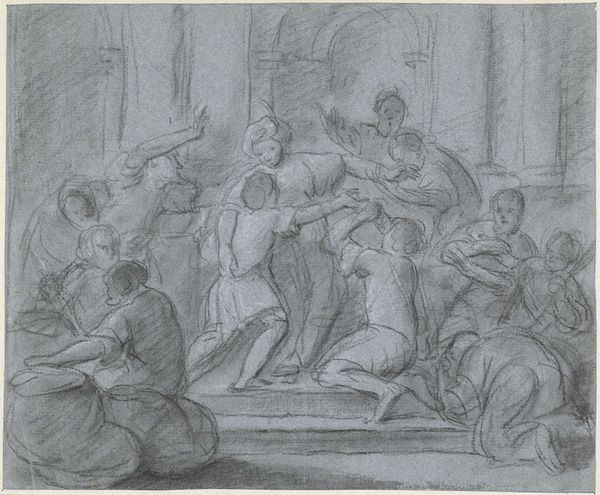
drawing, ink, pencil
#
drawing
#
narrative-art
#
pencil sketch
#
figuration
#
11_renaissance
#
ink
#
ink drawing experimentation
#
pen-ink sketch
#
pencil
#
pencil work
#
history-painting
#
academic-art
Dimensions: height 200 mm, width 298 mm
Copyright: Rijks Museum: Open Domain
Editor: Here we have *The Flagellation of Christ*, a drawing dating from around 1590 to 1600 by the Master of the Egmont Albums. It's rendered in pencil and ink, giving it this almost ghostly quality. It’s a really intense scene, and it makes me wonder about its original function. What's your take on it? Curator: It’s striking, isn't it? These history paintings from the late 16th century served various purposes. Think about the cultural context: the Counter-Reformation was in full swing, and images played a crucial role in reinforcing religious doctrine. Do you think a piece like this was meant for private devotion, or did it have a more public function? Editor: I would guess it could serve as a preparation or inspiration for a painting given it’s a drawing. Were these sorts of drawings sometimes exhibited on their own though? Curator: Precisely! Drawings were not always subordinate to painting; they could circulate among collectors and connoisseurs, fostering artistic discourse. This composition and dramatic staging point towards an awareness of contemporary art theory emphasizing the impact of narrative and its ability to engage viewers, even when presented through a preliminary medium. The flagellation was depicted with a lot of brutality. I wonder, does it make you reflect on the political powers at play and the role the narrative played to consolidate a message to its contemporaries? Editor: Absolutely. It’s a stark reminder of the power of religious institutions. This really shines a light on how religious narratives served to perpetuate particular world views during that time. Thanks, I will certainly remember all this when considering other works. Curator: And I will remember the value of engaging viewers, particularly with works not traditionally given much prominence in public narratives.
Comments
No comments
Be the first to comment and join the conversation on the ultimate creative platform.

